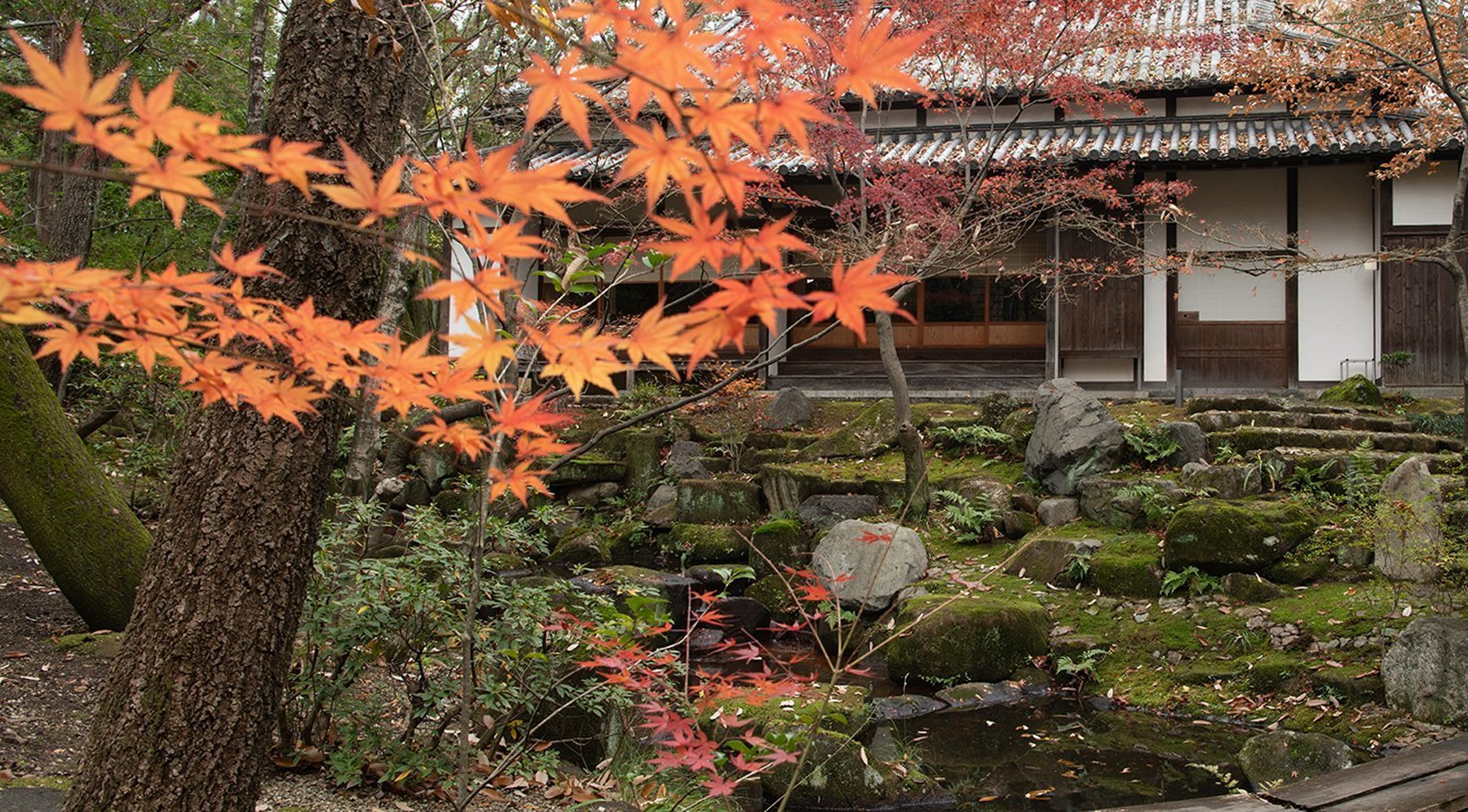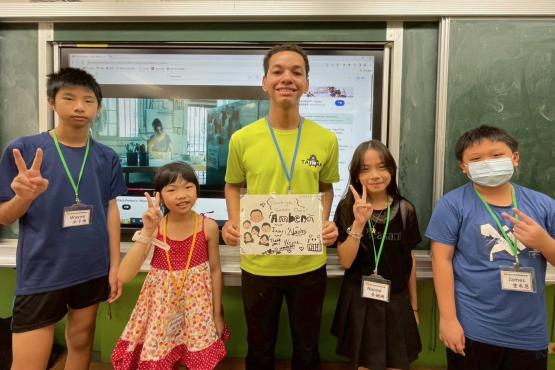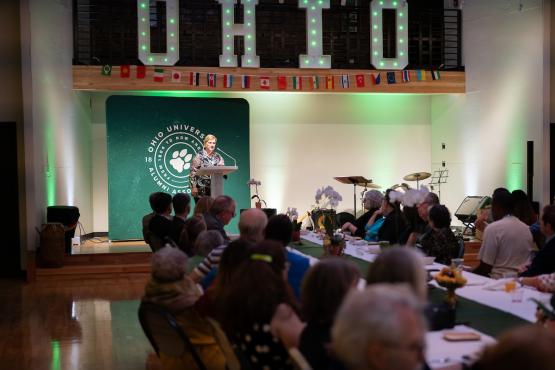
The connection between Chubu and Ohio Universities endures and prospers anew, 45 years on.
More than 6,700 miles separate Ohio University and Japan’s Chubu University. Yet they share some striking similarities. Both are located atop hilly terrain—one in Athens, Ohio, and the other in Kasugai, Aichi, Japan; both are adjacent to rivers, the Hocking and Utsutsu, respectively; and both have cultivated a mutual appreciation and a long-standing friendship with the other for almost half a century.
“I cannot think of any other [strategic] partner that has this deep of a relationship and commitment,” says Ji-Yeung Jang, OHIO’s director of Global Affairs. “We’ve built a truly meaningful partnership.”
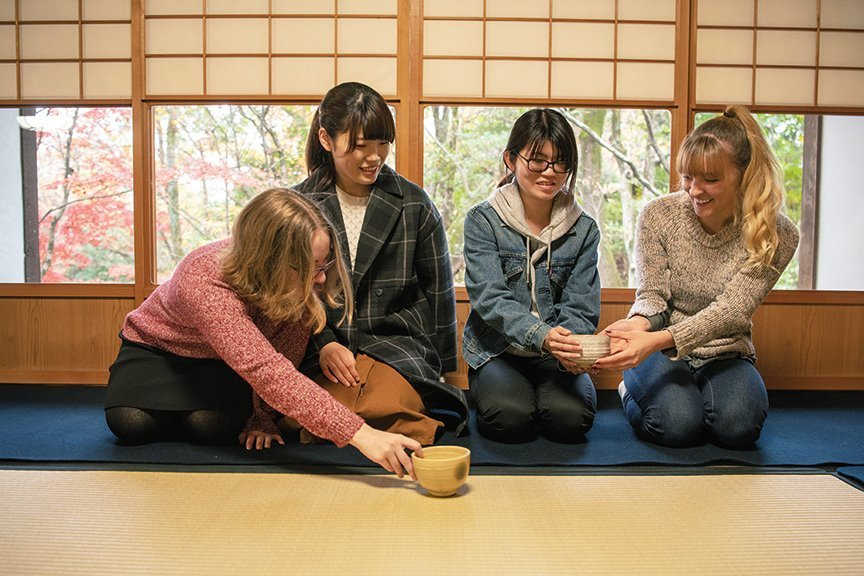
Two Chubu University students show OHIO’s Nora Davis [FAR LEFT] and Scarlett Woosley [FAR RIGHT] the difference between the front and back of each bowl during a tea ceremony hosted by CU’s Center for International Affairs in December 2018. Photo by Ben Wirtz Siegel, BSVC ’02
The relationship dates back to 1971, when Professor Tomoyasu Tanaka joined OHIO’s faculty in the physics department. Tanaka worked with his friend and colleague Hiroshi Katsumori, also a physics professor and the vice president of CU at the time, to initiate an exchange program. From that initial collaboration emerged today’s OHIO-CU study abroad programs, faculty exchange programs, scholarships, fellowships, and the Tanaka-OHIO Award for Excellence given to CU professors.
The bond has been sealed with the exchange of gifts and gestures of friendship over the years. OHIO gifted a replica of Cutler Hall’s cupola built for Chubu University, while CU supported the 2004 dedication of the Yamada International House on OHIO’s Athens Campus.
Perhaps CU’s most notable gift to OHIO is the delicately fragrant grove of Japanese cherry trees that line the Hockhocking Adena Bikeway alongside the Hocking River.
While these gifts visually mark the bond between OHIO and CU, the primary thread that cements the relationship is the exchange of talent and knowledge.
The OHIO-CU visiting professorship exchange allows OHIO faculty to visit CU via the Kohei Miura Visiting Professorship, now in its 46th year, and CU faculty to visit OHIO via the Robert Glidden Visiting Professorship, currently in its 16th year.
![Professors Scott Hooper [LEFT] and Yukata Hirata collaborated in Hooper’s lab in fall 2018.](/sites/ohio.edu.news/files/2024-02/Scott-Hooper-with-Chubu-professor.jpg)
Professors Scott Hooper [LEFT] and Yukata Hirata collaborated in Hooper’s lab in fall 2018. Here, Hooper welcomes Hirata back this fall for more collaboration on the research. Photo by Ben Wirtz Siegel, BSVC ’02
During his five weeks in Athens last fall as the Glidden Visiting Professor, Yutaka Hirata enjoyed weekend runs along the bike path, meals at locally owned restaurants, and weekly lab meetings over craft beers, not to mention the opportunity to study the inner workings of lobster brains with Biological Sciences Department faculty.
“Working with Professor Scott Hooper and his lab members was fascinating, and I learned a lot of neurophysiological and computational techniques that I didn’t have in my lab,” says Hirata, whose specialty includes studying motor learning and memory in primates and fish. “I also learned an important skill in the Hooper Lab: how to catch a huge, active lobster!”
Hirata’s experience spawned more collaboration between CU and OHIO. In September 2019, Hirata returned to OHIO’s Athens campus with eight CU faculty for a research information exchange meeting. It’s all part of further developing and expanding the relationship, says Hirata.
“Despite the long-lasting, strong partnership between OHIO and CU, somehow scientific and engineering research collaboration has not been well-cultivated. I wanted to initiate a movement toward fruitful research collaboration that involves both our universities’ faculty members and grad students.”
September also marked a big month for Hirata’s counterpart Chris Thompson, last year’s CU Kohei Miura Visiting Professor. Every fourth weekend of September, Thompson leads a group of students in tsunami relief efforts in Japan’s Iwate Prefecture, a region badly damaged in the 2011 magnitude 9.1 undersea earthquake. This year marks the ninth year Thompson and both OHIO and CU students have been serving that region.
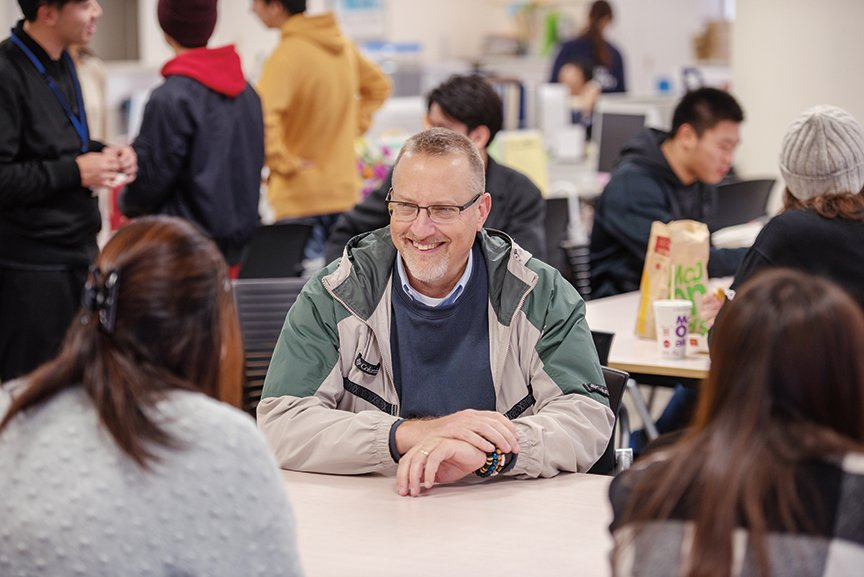
OHIO’s Chubu University Visiting Professor Chris Thompson attended almost every one of CU’s Thursday “Conversation Table” events at the university’s Center for International Affairs. The weekly event encourages dialogue between students and faculty. Photo by Ben Wirtz Siegel, BSVC ’02
“Our trips started as weekend cleanups and have evolved into community development work,” explains Thompson, adding that the group gives English lessons and takes part in neighborhood cultural festivals. Thompson, associate professor of linguistics, plays a vital role in keeping the Chubu-OHIO relationship alive, co-chairing the Chubu University Relations Committee and acting as OHIO’s Japan Study Abroad Coordinator.
Both Hirata’s research exchange meeting and Thompson’s involvement play an important part in the stalwart relationship between OHIO and CU, says Jang.
“We’re always looking for ways to open more doors between the two institutions and internationalize our campus.”
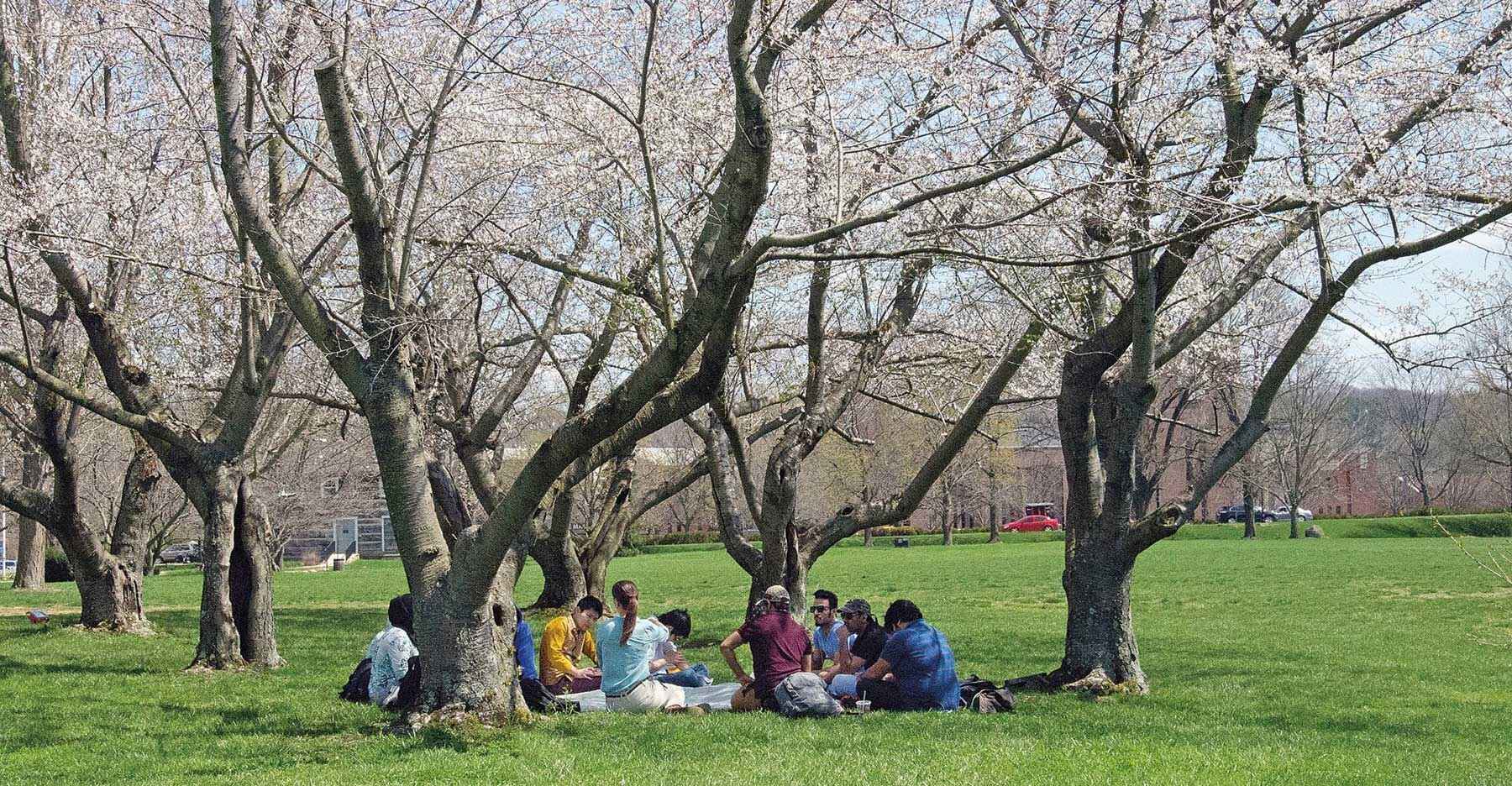
Feature photograph: Students meet and collaborate among the cherry trees earlier this spring. The trees were gifted to OHIO by Chubu University. Photo by Kat Morrison, BSVC ’16
A relationship in bloom
Since 1979, the cherry blossom trees that line the Hockhocking Adena Bikeway along Shafer Street on the Athens Campus’s West Green have been beloved by students and alumni alike. National Geographic took note in 2019, naming the campus one of eight “best places to see cherry blossoms in the U.S.”
Tourists may only see the beauty of the blooms, but OHIO and Chubu University see it as a symbol of their beautiful friendship. Chubu University gifted OHIO 175 Yoshino cherry trees in 1979 in honor of OHIO’s 175th anniversary, and in 2003, Chubu brought the number to 200 (including a number of double weeping cherry trees) to commemorate OHIO’s bicentennial celebration.
Peak bloom typically happens between late March and mid-April, and says Susan Calhoun, OHIO’s landscape coordinator.
“When they’re blooming, they’re like a [people] magnet,” she says. “There’s nothing like a mass display of those pink blossoms. They’ve just become more popular every year.”
To protect the trees, Calhoun and her team posted signs that encourage visitors to not climb on or hammock in the fragile trees. “I often receive concerned phone calls—people are so attached to these trees that they feel ownership,” says Calhoun. A note about their cultural significance and a “thank you” in Japanese accompany the sign.


